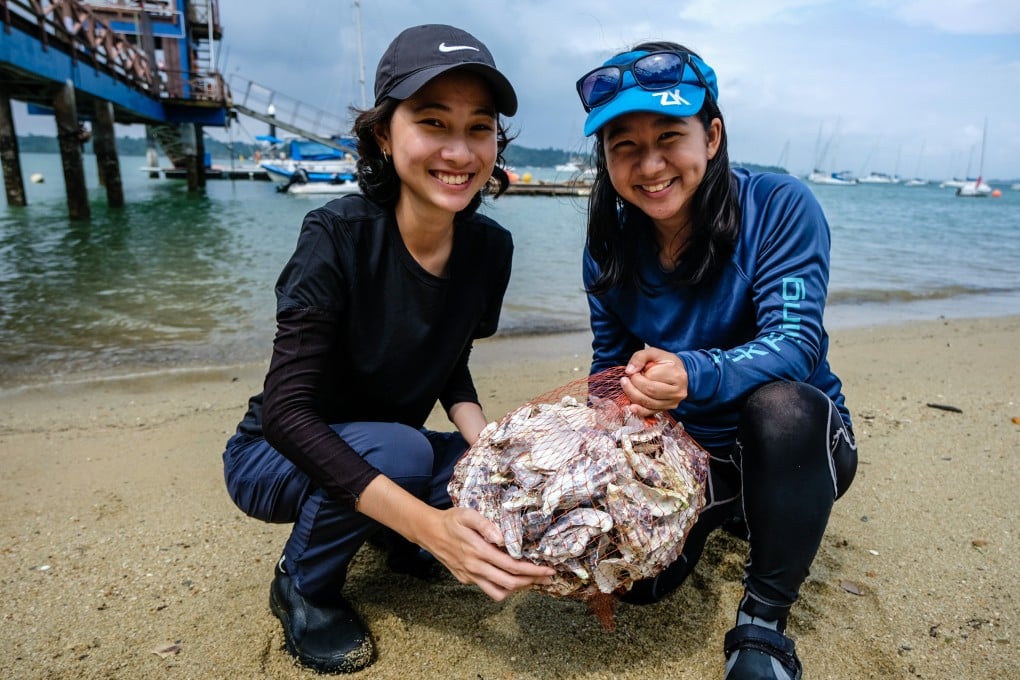Ecologists hope to build Singapore’s first man-made oyster reef
- Man-made oyster reefs have popped up across Australia, Europe and the US but remains a relatively new concept in Southeast Asia
- Scientists say artificial oyster reefs help boost local marine biodiversity, lower pollution in waters and provide food for sea organisms

They pour seawater into the boxes of shells, which are then cleaned and left to dry under the sun to kill any bacteria, ensuring no risk of biohazards or pollution.
Once the “quarantine period” is over, the oyster shells are placed in reef bags made of biodegradable potato starch.

Suited up in rash guards and snorkelling gear, Yokoyama and her team swim a short distance in the sea to secure the reef bags on a jetty’s concrete pillars.
By reintroducing the oyster shells back into Singapore’s waters, they hope that baby oyster larvae will settle on the shells in the reef bags. Over time, the aim is for the oysters to form a hard oyster reef structure. The shells should provide crevices to shelter other marine organisms such as fish, molluscs and crustaceans.
Oyster reefs are among the most severely degraded marine habitats on the planet, reports by The Nature Conservancy show, mainly due to overharvesting, poor fishing practices and coastal developments.